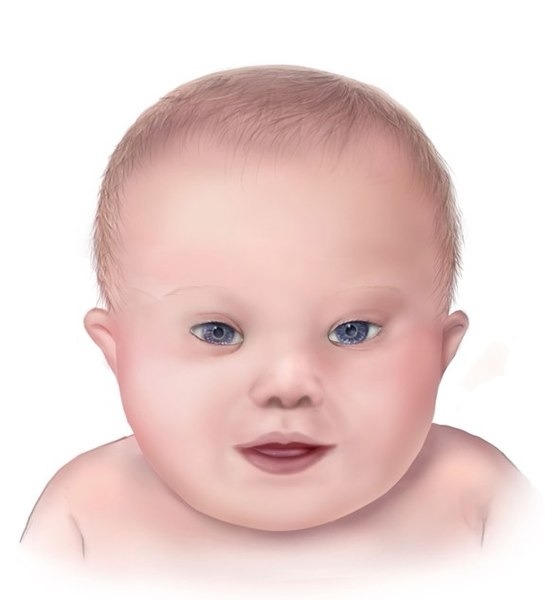
Congenital Birth Defects
1 Feb 2018 | 5 min Read
Babychakra
Author | 1369 Articles
Birth Defects: Heartbreakers That Can Be Avoided
What are congenital birth defects?
Congenital birth defects or congenital anomalies are physical or functional inadequacies in a baby. Seeing your frail newborn with one of these can be a real heartbreaker.
The defect develops when the baby is growing in the mother’s womb. Most types of birth defects occur in the first 3 months of pregnancy and can be identified with the help of lab tests or an ultrasonography scan well before the baby is born. Some are visible only after the baby’s birth, while others might become visible as the child grows into a toddler.
A birth defect, either structural or functional usually has a long-term effect on the child’s life. Some of the defects are surgically correctable after birth while others keep progressing.
According to WHO birth defects are responsible for 3, 03,000 deaths in newborn babies within 4 weeks of birth every year throughout the world.
Commonly observed most severe birth defects in children all over the world are heart defects, neural tube defects and Down’s syndrome.
Researchers have not been able to find exactly what causes defects in babies before birth. Scientists have identified some major causes of congenital disorders that were frequently observed in various research studies.
1. Chromosomal birth defects: Defect in the number of chromosomes or structure of one or more chromosomes, or a part of the chromosome results in defects. e.g. Down’s syndrome, Turner’s syndrome, Klinefelter syndrome, etc.
2. Genetic defects: Defect, mutation or change in one or more genes leads to their improper functioning giving rise to congenital disorders. e.g. cystic fibrosis, muscular dystrophy, congenital heart defects, sickle cell anemia, cleft palate, cleft lips, spina bifida, etc. Genetic defects are inherited by the child from either one or both parents carrying the defective gene.
3. Problems during pregnancy:
- An infection in the mother during pregnancy. E.g.Zika virus birth defects in the brain of babies were cause for major worry last year. Other infections include cytomegalovirus, chicken pox virus, German measles virus, etc.
- Chronic diseases in mother such as high blood pressure, diabetes, autoimmune disorders etc.
- Cigarette smoking and alcohol consumption during pregnancy
- Certain medicines taken by mother during pregnancy e.g. medicines containing thalidomide, isotretinoin and retinoid cream
- Exposure to environmental pollution by chemicals like hydrocarbons during pregnancy.
- Deficiency of certain nutrients e.g. folic acid deficiency leads to neural tube defects or spinal cord defects.
- Late pregnancy beyond 35 years age of mother.

Zika virus birth defect
4. Social factors:
- Consanguineous marriage increases the chances of rare genetic birth defects e.g. haemophilia, cystic fibrosis birth defect
- Families with low income have higher chances of children born with birth defects due to compromised nutrition of mother during pregnancy.
Types of birth defects
Birth defects or congenital anomalies are majorly grouped into structural anomalies and functional anomalies.
Structural birth defects are alternations in the structure of one or more body parts e.g., cleft lip, cleft palate, club foot, heart defects, defects in spinal cord (spina bifida), etc.
Functional or developmental anomalies are disorders in functioning of a certain pathway in the body. e.g., muscular dystrophy, deafness or blindness, hypothyroidism, phenylketonuria, etc.
Chances of birth defects in babies are high when their growth is retarded in the mother’s womb. Further, babies with more than one birth defect have retarded growth in the womb. Slow growth of a fetus might point to a congenital anomaly before birth.
Common congenital anomalies
Congenital defects that are commonly seen include:
1. Spina bifida is a neural tube birth defect where there is failure of closure of the neural cord, which later forms the spinal cord, in the developing embryo. The defect results in abnormality in bowel and urinary bladder function, paralysis and loss of sensation in legs, and inability to walk. In severe cases death is inevitable. Other forms of neural tube defects include anencephaly (brain and skull defect), encephalocele (bulging of a part of brain through a hole in skull), etc.

Spina bifida
2. Cleft lip and cleft palate is a defect in the joining of skull bone called maxilla which forms the roof of the mouth. These may be present together or alone. The defect can be corrected with surgery.

Cleft lip
3. Congenital heart defects arise from genetic defects. These include septal defects (defects in the wall separating chambers of the heart), defects in the valves, etc. Babies born with congenital heart defects cry due to breathlessness after feeding, or are not able to complete feeding which leads to improper growth of the baby.
4. Congenital dislocation of hip joint is another common birth defect seen in girls. The defect is detected on physical examination. In some kids the length of affected leg is smaller than the other normal leg. Kids face difficulty in walking when the problem is not solved before the child learns to walk.
5. Hypospadias is a birth defect occurring in boys. The urethral opening on penis is at an abnormal location other than the tip of the penis. Hypospadias is a chromosomal defect and requires surgery for correction.
Disclaimer: The information in the article is not intended or implied to be a substitute for professional medical advice, diagnosis or treatment. Always seek the advice of your doctor.
Also read: Infantile Hemangioma: A Birthmark Or A Tumor?
Explore the entire collection of articles: Baby Care
A


Related Topics for you
Suggestions offered by doctors on BabyChakra are of advisory nature i.e., for educational and informational purposes only. Content posted on, created for, or compiled by BabyChakra is not intended or designed to replace your doctor's independent judgment about any symptom, condition, or the appropriateness or risks of a procedure or treatment for a given person.
